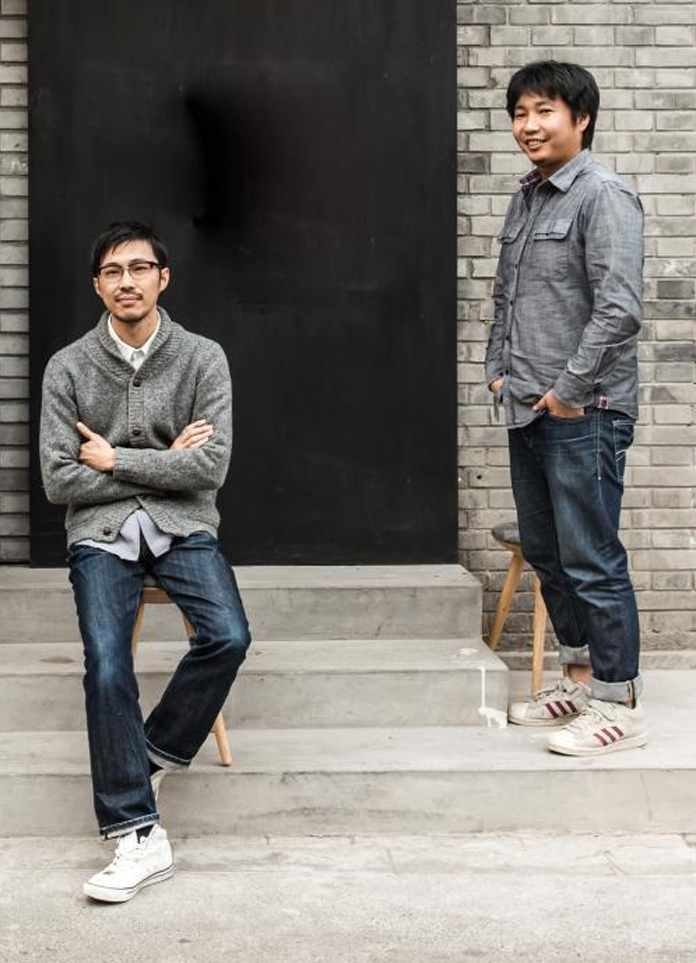
odd believes that design should reflect modern people's living conditions and living environment, so they design works with respect for other people's culture as their purpose. However, in this multicultural society, it is far from enough to directly reflect classical culture in design works. Whether in urban planning, architectural design or interior design, they will seek to interpret the unique characteristics of different cultures with the latest and most modern techniques.Yinji: Young designers are the mainstay of design in the circle. How did you start your design path? What do you want for your future?
odd: Soon I'll be 40. Design has been my career for 15 years. In those 15 years, China has changed not only economically, but also in terms of design. Ten years ago, I learned a lot from Europe, America, Japan and other places leading in design. I think China's unique design culture is taking shape now. It's also one of the most developed countries for smartphones and mobile payments, and it's hard to see such a convenient lifestyle in other countries. Therefore, people's lifestyle has become rich and diversified, and personalized design has a requirement. Whether it is now or in the future, China's unique design style continues to explore and grow. I think we, as the experience of that dramatic change, analyze what is needed now, and then take our imagination from there and create something new that would have been better in the future.
Yinji: Why did you choose to live in Beijing? Did you like the culture of old Beijing?
odd: Beijing in my opinion is a place where advanced and culture coexist. It is very charming. We reinterpret cultures formed over the long course of history and design them to fit modern life. It is Beijing itself that has established this unique design style, so we also want to build on it in the future.Yinji: How did you guys know each other? What led you to start Odd Firm together?
odd: We met when we came to Beijing in 2006. Before the firm was founded [until 2012] we were all working on our own projects. Led by an accidental project, we began to work together. The cooperation process felt good, so I came up with the idea of opening an office together. Odd has a strange meaning in addition to being our own abbreviation, because it's the connection and the turning point that makes our odd stand.
Yinji: From urban planning to interior design? How do you switch between the two roles?
odd: We both used to be urban planners, but now we're both immersed in interior design. It sounds like a crossover, but for us, the scale and expertise are different, but the thinking about space design is the same. The city itself is our home, and the interior is the most important part of the home, which needs our personal experience and perception. As designers, we are doing things to optimize our lives. So in terms of interior decoration, no matter from the overall planning to the details, we will put people first and design very, very carefully.
Yinji: In your opinion, what are the commonalities and characteristics between Chinese design and Japanese design?
odd: Because the socioeconomic status of China and Japan is very different, the design requirements are very different. In my opinion, despite the simplicity in Japan, people like the design that can reduce the environmental load in addition to the function. Moreover, because of the limited land and resources in Japan, people tend to design with environmental awareness. In China, the vast majority of people prefer web celebrity, easy to film or very personalized design. However, China and Japan are two countries that are culturally interconnected. For thousands of years, Oriental culture has penetrated into our life and influenced our survival. This deep-rooted Oriental soul, no matter it is Buddhism, Zen, flowers, tea, etc., is loved and praised by everyone. Because there are so many common cultures, I think it's easy for us to understand each other. In this way, with such a concept, we analyzed the needs of today's China, and carefully do what we can do, and reflected in the design.




























